How does an educator of multilingual learners (MLs) make progress toward equitable and inclusive teaching? Scaffolding the instructional content is an important, often essential step. Making content accessible for MLs will open opportunities for students to engage, comprehend content, and ultimately be successful in learning grade-level content. Yet for a busy teacher, it can be tricky to know how to get started.
In this post, I’ll share some of the ways teachers can approach scaffolding through some initial questions we can ask ourselves at the onset of planning a lesson or unit. The three lines of questioning are around:
- Scaffolding instructional input
- Scaffolding student output
- Supporting language development
My hope is that before applying scaffolding methods to learning activities, we can get clear on how to thoughtfully meet student needs with appropriate, individualized support. The reflection questions provided in this post will help you get started.
A Scaffolding Definition, in Education Terms: What Are Scaffolds?
In content-area teaching, scaffolding is intentionally selecting supports which assist students in learning activities and tasks. Scaffolds are meant to be temporary, provided only as long as a student needs the support. Scaffolds do not modify the content or objectives of instruction, but rather help all students have equal opportunity to be successful. To determine what are scaffolds that are most effective for a given ML, teachers need to:
- understand individual students’ English language development and proficiency
- be mindful of the MLs’ educational history, background knowledge, and experiences
- stay flexible and responsive to student needs, which may change, depending on the learning activity/task
Scaffolds can be implemented in student learning materials, teacher presentation, and student engagement activities. As we seek to move toward inclusive teaching, scaffolding is essential. Below are three ways teachers can think about how to offer students support.
Planning for Accessible Teaching: Scaffolding Instructional Input
The first way to approach scaffolding for multilingual learners is to take a look at how content information will be presented to students during a lesson. What is the input they will be receiving? How will they need to interpret academic English? Will it be through a lecture, reading a text, listening to a story, viewing a video? Is the input comprehensible to students, given their degree of English proficiency? If not, how can we scaffold the content to make it more accessible?
Here are some questions you might ask once you have the outline of your lesson complete:
- How will text and speech be made comprehensible?
- Where is visual support needed?
- What content understandings are essential to communicate?
- Will some formatting changes be helpful to reduce the cognitive load for students?
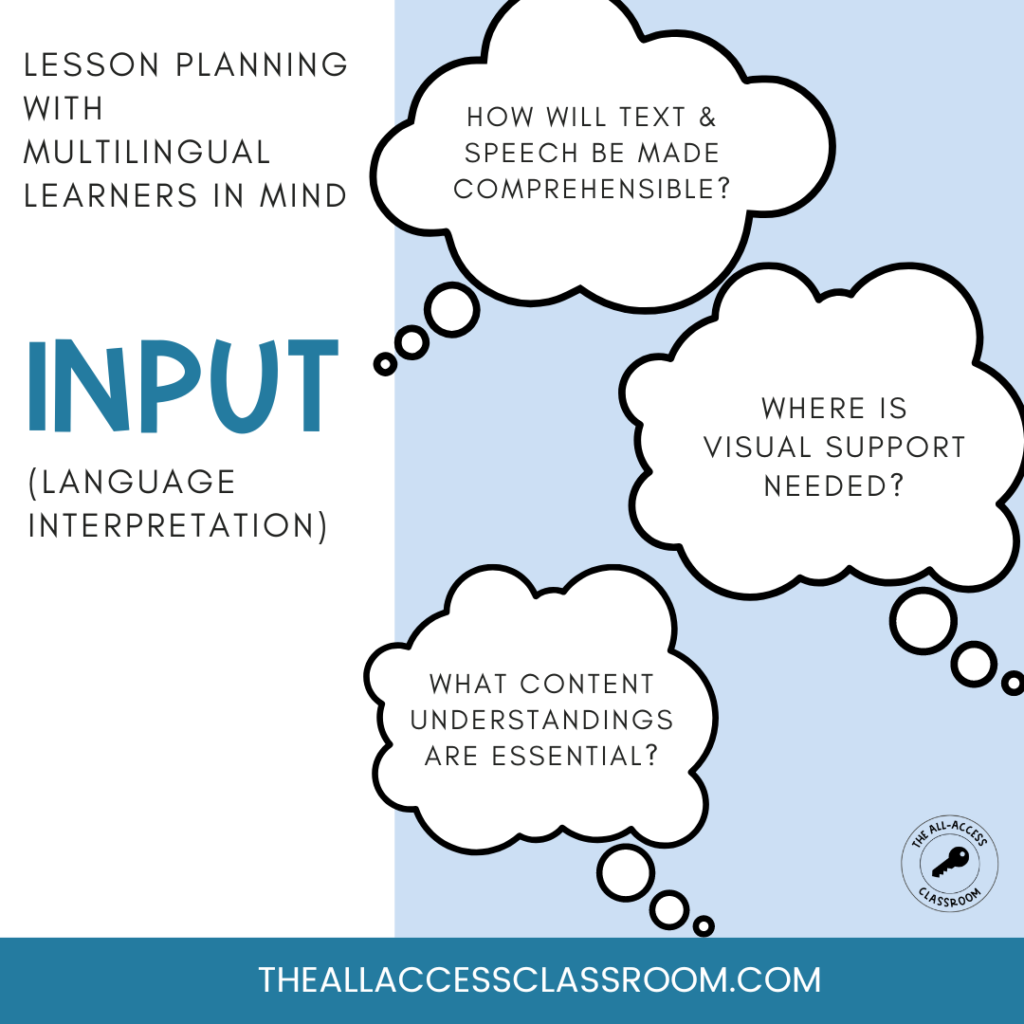
For example, if reading aloud to students, would MLs benefit from visual support, pre-taught vocabulary, a slower rate of speech, or a storyboard summary of what is read? If viewing a video, do they need captions, or periodic pauses to process chunks of content?
There are many ways we can scaffold our teaching to make it comprehensible for our MLs. (See graphic later in this post for more ideas.)
Also Consider when Teaching: Scaffolding Student Output
Just as MLs need comprehensible input, they need reasonable expectations for the language they will produce when completing assignments or assessments. There are ways we can present, model, and explain learning tasks that invite MLs to confidently engage and demonstrate mastery.
Initially, we need a general understanding of where our students are in their productive English proficiency. That is, with what degree of complexity are our MLs able to express themselves in English through speaking and writing? Some students may need the opportunity to utilize their primary language. Others may need assignments where they can engage at the word or basic sentence level.
When considering assignments to be given throughout our teaching, scaffolding the student output may be necessary. We can ask ourselves the following questions as we prepare:
- Does it enable/activate students’ existing language assets?
- Would guides or tools make the task less overwhelming?
- If an assessment: Will this assess what students have had appropriate access to throughout the learning unit/lesson?
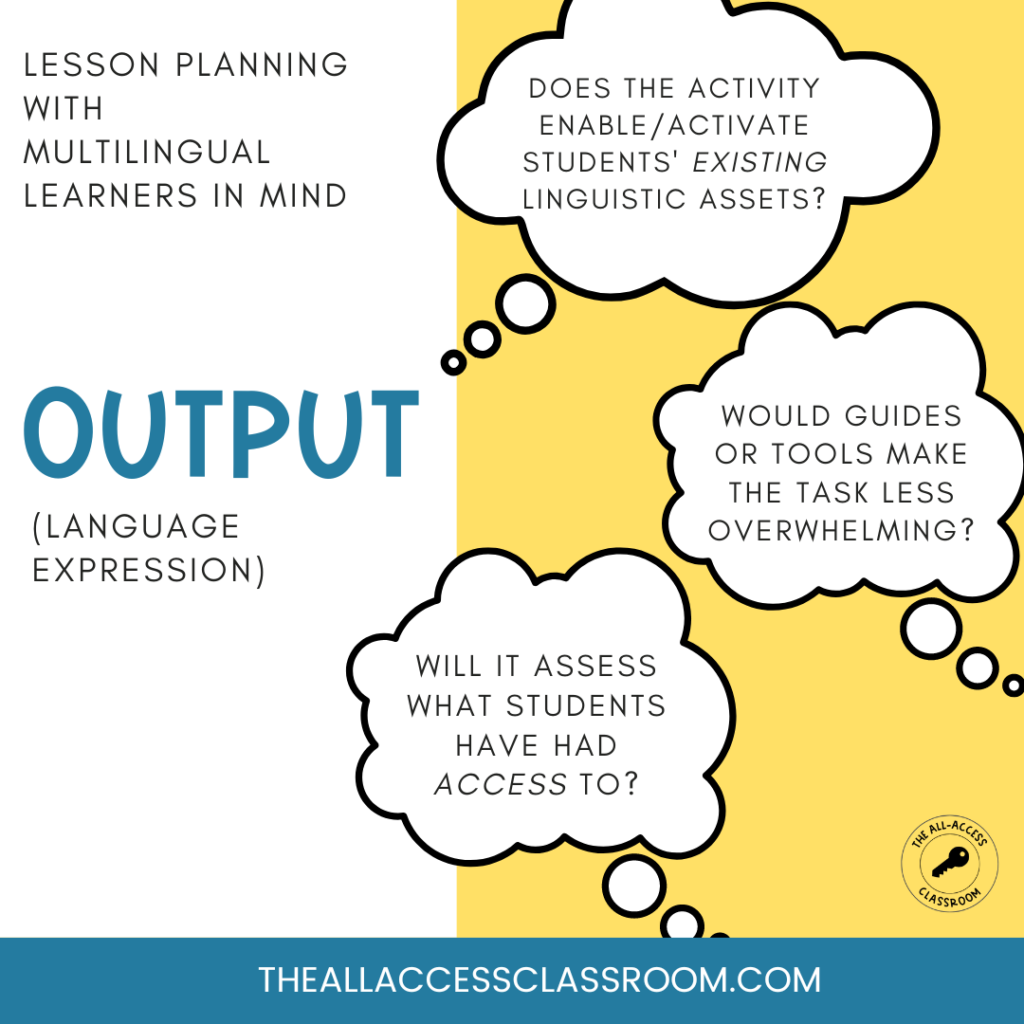
Example of differentiated product/assessment:
Perhaps the class will be using words from a word bank to fill in blanks in a paragraph. For MLs, you may decide to add visuals next to the words in the word bank. You might reduce the number of sentences to be completed. You could also opt to give the MLs 2 or 3 options to select from, as they determine how to fill in the blanks.
Depending on your MLs’ language proficiency levels (usually determined by annual testing), you may need to scaffold student output. You will have greater peace of mind, knowing you are leading your MLs through differentiated product tasks that they can be successful in.
Owning the Role of Language Coach: Supporting English Language Development
A third way to approach supporting MLs in content instruction is to embrace your role as a language teacher. Every content teacher is responsible for teaching the language of the subject matter. (All students are academic English learners, right?) We have the opportunity to not only engage our students in content-based discourse, but also to support our MLs’ English development. Contextualized, relevant practice is ideal for helping our MLs grow. The more you get to know your students, the better you will be able to identify ways to encourage them to take the next step in their language use.
You might provide a newcomer with necessary scaffolds, allowing them to be successful at the “single word/phrase” level. At the same time, you can coach them through an activity with simple sentences, helping them to be successful in a linguistically-challenging activity.
It is important for every educator to take responsibility for the academic and linguistic progress of multilingual learners they serve. It is only through this shared responsibility and collaboration that MLs will thrive throughout the school day.
Here are some questions for consideration:
- What academic language can I introduce, reinforce, or provide for students?
- What is the “sweet spot” of support + advancement in language development?
- Can I include a language objective for all students?
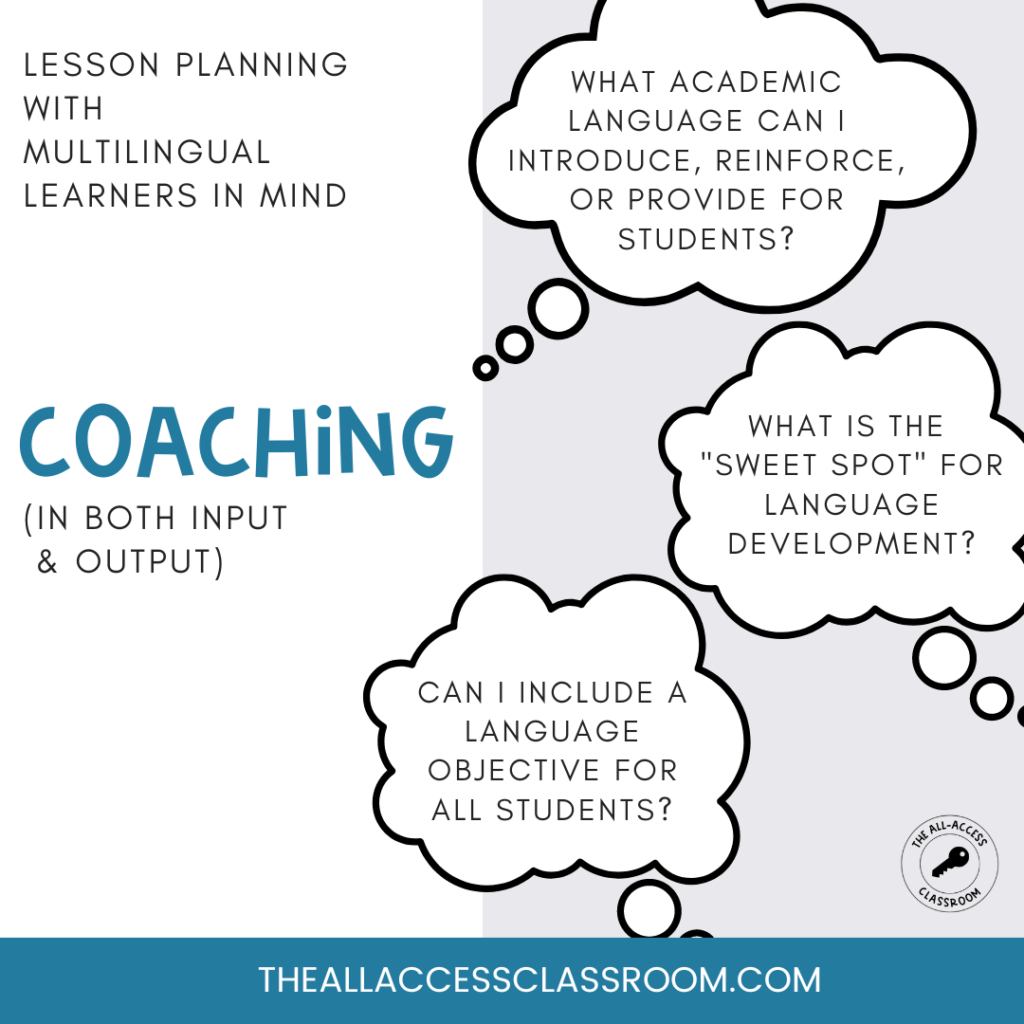
Growth Mindset for Supporting ELLs: Strategies That Build over Time
A final word of encouragement, if you find yourself overwhelmed by the number of scaffolding methods that you have to draw from. Or if you feel that you don’t have the time needed to provide needed scaffolds for your English language learners. Start small, with 1-2 scaffolds at a time, if that is what is doable for you as you lesson plan. Remain flexible and experiment with which scaffolds are the best fit for your ELLs. Strategies that may work great for one student, may not be what’s best for another.
Over time, you will get to know and confidently implement more scaffolding methods. Collaborate with your teaching colleagues as you problem-solve together. Keep the questions from this post on-hand to consider as you lesson plan.
I also wanted to give you this one-page flyer, which gives you a menu of scaffolds for both student input and output. I hope this can be helpful to you! Happy Scaffolding! (Click the image below to access the flyer.)
Interested in digging deeper? Want your own digital Scaffolding Toolbox, complete with a “how-to” explanation for each method? Check out the All-Access Instruction course for teachers. I’d love to support you further!
For more information and resources, check out:
Blog: Easy Steps to Lesson Plan with Objectives for Content & Language – WIDA 2020 Standards, Part 1
Blog: How to Scaffold for ELLs So They Can Better Comprehend Grade-Level Text
4 Strategies for Scaffolding Instruction for ELs (TESOL Blog)
Scaffolding Techniques for English Language Learners (Collaborative Classroom)
Resource: Building Background Knowledge Digital Templates Bundle


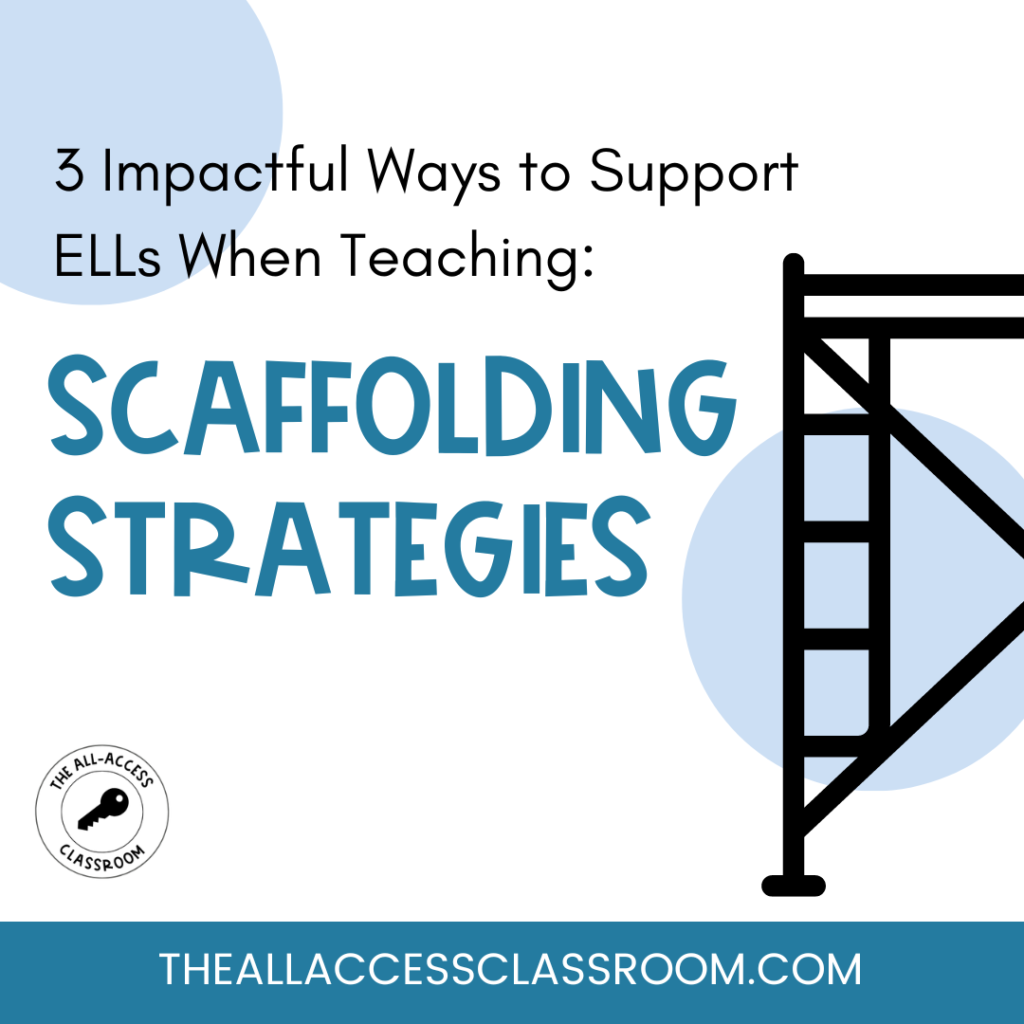
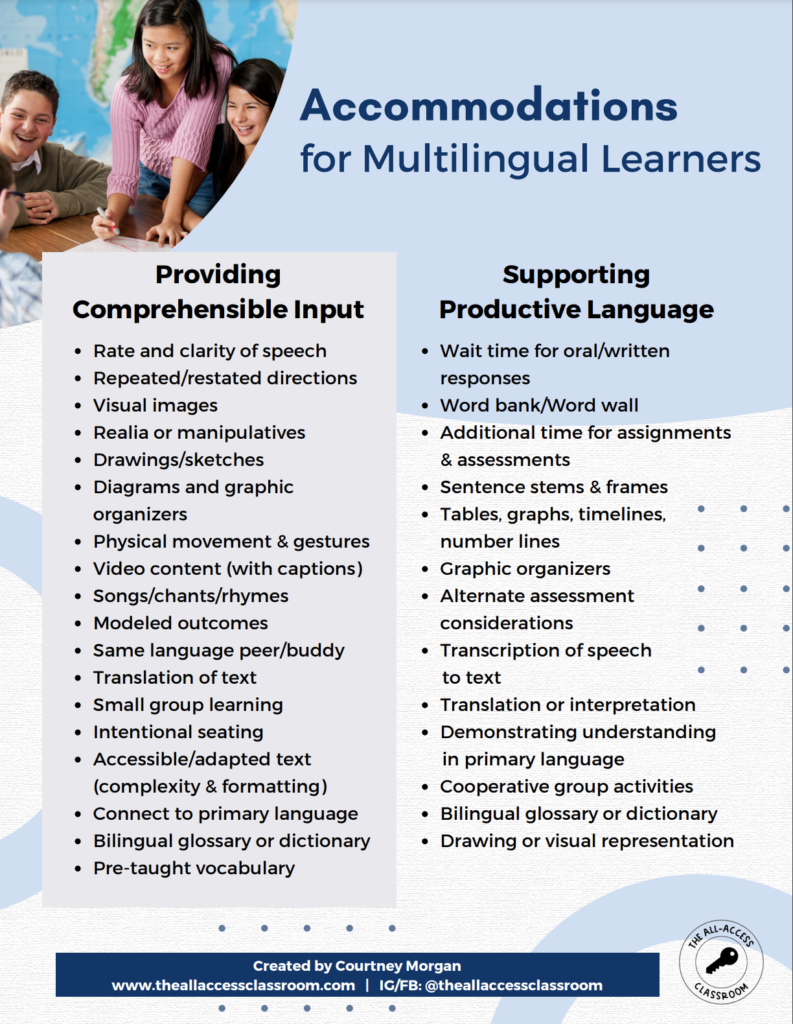
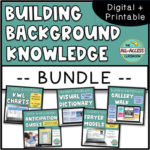

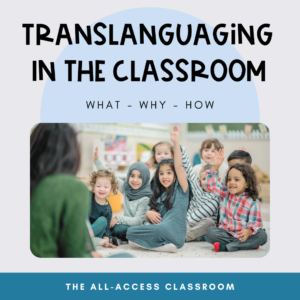
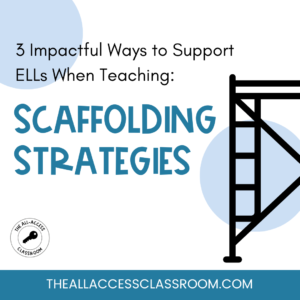
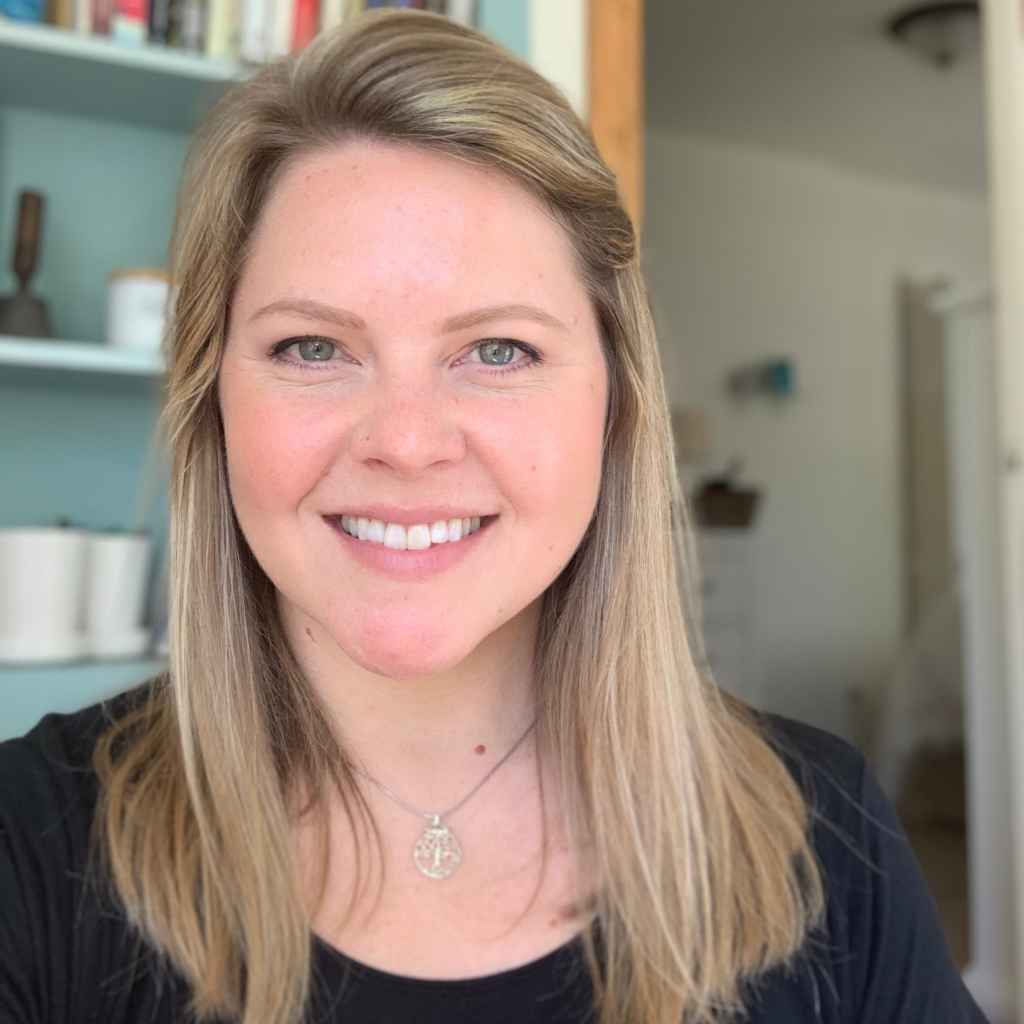
4 Responses
HI Courtney,
Thank you so much for sharing these great topics that teachers of MLs can really use in the classroom. I am sharing the one-page information on Accommodation with my MLP teachers. Information that they already should know but something they could also share with the regular classroom teachers.
I am the MLP/Title III Coordinator for our district and I usually conduct all the district-wide PDs. You don’t mind if I share with them what you have shared in this blog. May I also get your permission if I could share this link in our district website, with credits to you?
You are doing a fabulous job sharing your knowledge and expertise through your website! Thank you!
Yvonne
Hi Yvonne,
Thank you for your message, and for your kind words! I’m so happy that this content can be helpful to you as you equip educators in your school district! You may absolutely share the blog link and accommodations flyer. I hope they can further your progress toward equity as a district. Please reach out if there is anything further I can do to support you. I will be offering consulting services beginning this summer, if you ever have a need! All the best, Courtney